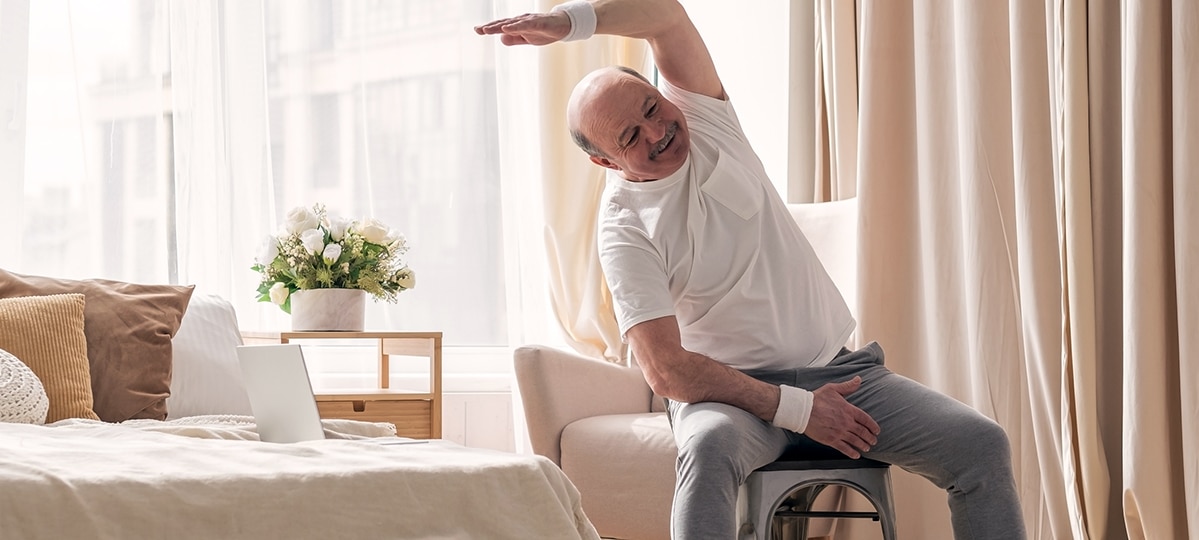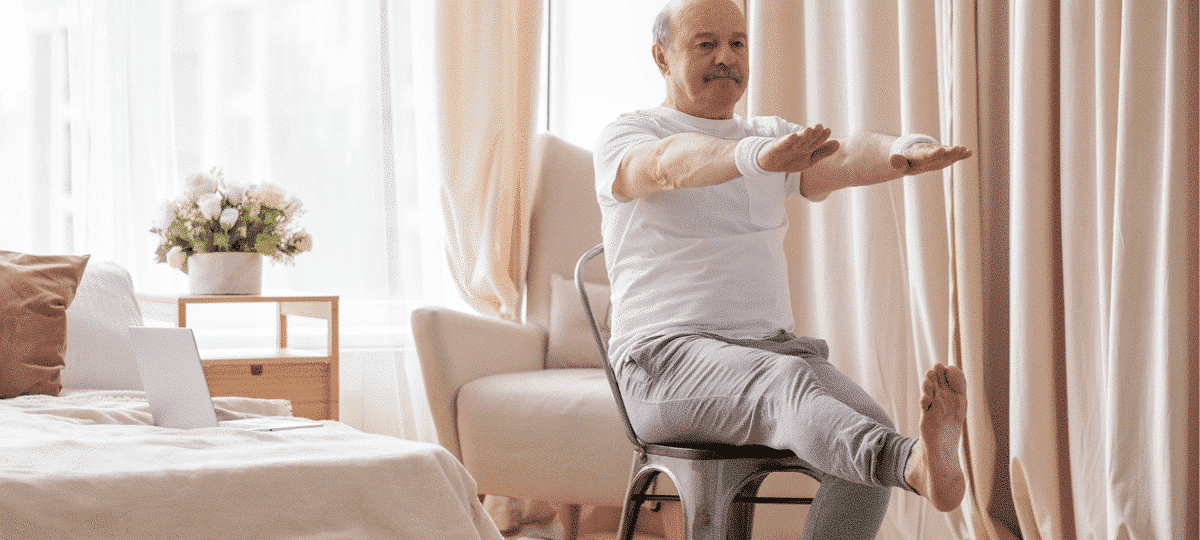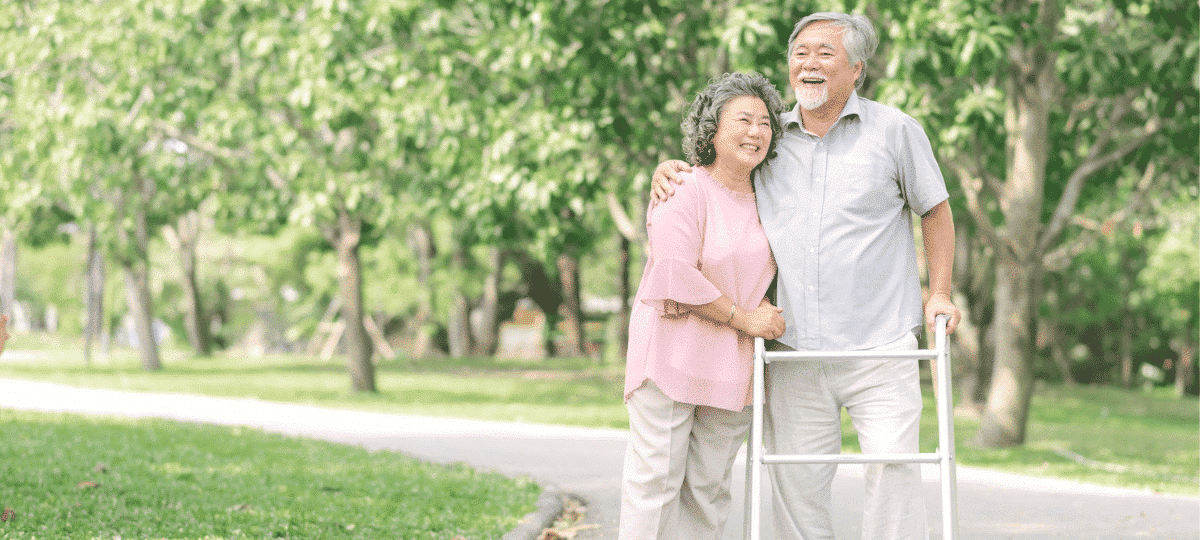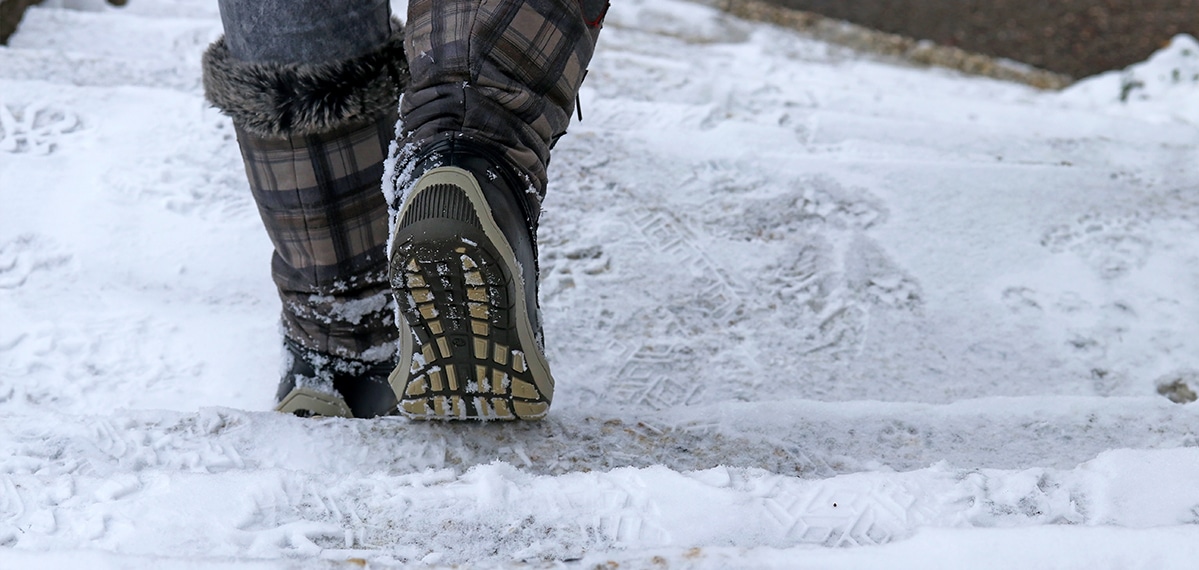Mobility is defined as your ability to move purposefully through your environment, according to gerontologists at the University of Alabama in Birmingham.
Mobility can also be said to define your life—physically, emotionally, socially. But you may not see its impact until you start to lose mobility. Maybe you no longer spring out of your comfy chair after a night of watching television. Or, your walking pace has slowed. You used to hustle like a speed walker in Times Square, but now you can’t keep up with your neighborhood walking group because your stride is a little off.
These are early warning signs: slight changes in balance or gait signaling mobility problems. You’re not alone if you’re noticing them. According to the Centers for Disease Control and Prevention (CDC), roughly 19% of adults 18 and older have difficulty walking or climbing stairs. For adults 65 and older, at least 30 percent report difficulty walking three city blocks or climbing one flight of stairs, according to Thomas Jefferson University researchers reporting in American Family Physician. Most disturbing is the endpoint for an unchecked decline in mobility: An older adult suffers a fall just about every second of every day in this country, says the CDC, and falls are the leading cause of death in this age group.
A Declining Mobility Solution
If your loved one is struggling with being able to bath and shower, dressing or feeding themselves it may be time to evaluate if a senior living option is right for them. Senior living communities can provide stable environments for seniors with higher care needs or those that desire a sense of community or access to amenities that may not be available in their current setting. If you’re looking for a place to get started with seeking professional services Medical Alert is here to help—we have teamed up with A Place for Mom who is the leading senior living advisory service in the United States. A Place for Mom’s expert advisors help caregivers and their families find the right senior living options for their aging loved ones through personalized referrals, tour scheduling and move-in support. Their services come at no cost to families as A Place for Mom is paid for by its network of 17,000+ participating communities and home care providers.
However, this downward spiral is not inevitable, although the “use it or lose it” principle makes a huge difference in mobility maintenance. The clearest example of this is the pandemic, which led to a rapid decline in mobility especially in older folks. In a recent issue of Cleveland Clinic’s online health magazine called healthessentials, physical therapist Amy Cassady discusses the pandemic’s impact on her patients. “I hear a lot of my patients, regardless of their abilities, saying they now can’t tolerate as much activity,” she says. The loss of movement tied to sheltering has had a cascade effect on all aspects of mobility: Yardwork now tires older people easily; running errands has become exhausting. “They mention imbalance, reduced strength, stiffness, and reduced flexibility as hips, knees, and backs have tightened up,” she says. Even worse, extensive research over the years has shown that a downward spiral can eventually include challenges in daily living (dressing and bathing activities); higher rates of depression and cognitive lapses; and worsening of chronic disease like arthritis or diabetes.
Indeed, studies by sports medicine experts and gerontologists show that mobility is made up of many key components including:
- strength
- stamina
- balance
- gait
- flexibility
- range of motion
When components sync, benchmarks in mobility include the ability to:
- get out of bed easily
- take a shower
- cook
- climb a flight of stairs
- walk a quarter- or half-mile easily
- get in and out of a car
- drive to a grocery store
- carry bags
Ways to Assess Mobility Impairment
According to gerontologists at the University of Alabama at Birmingham, Thomas Jefferson University in Philadelphia, and reporting in the Journal of Preventive Medicine and Public Health, risk factors for mobility impairment include:
- older age
- low physical activity
- obesity
- strength or balance impairment
- chronic diseases such as diabetes, arthritis, or orthostatic hypotension
- chronic pain
- vision or hearing loss
Your health care provider (HCP) will assess your mobility at your well visits and any appointment that touches on mobility. However, you should also report any changes you notice, or concerns you harbor, so that your HCP can address them immediately. Early intervention is shown to reverse problems and promote mobility. Your HCP may ask whether you’ve fallen in the past year or if you worry about falling. In addition, expect some of these tests at your next appointment:
Gait
Changes in the speed or pattern of your gait—i.e. the way you walk–can be a sign of mobility trouble. Older age brings a slight to moderate reduction in the speed and length of your stride. An HCP will time you as you walk several feet across a room. Walking quickly is a good sign. A halting or shuffling gait can signal a problem.
The “Timed Up and Go” (TUG) Test
This is a fast and reliable diagnostic tool. You sit in a chair and stand up to walk about 10 feet in a line; then you return to your chair and sit down. Completing the task in less than 12 seconds is a good sign. Taking 12 seconds or longer indicates a problem and risk of falling. Further red flags include shuffling, wobbling, or failing to swing your arms while you walk.
Simple Challenges
This assessment evaluates how you step over an obstacle, pick up a pencil from the floor, or remove a jacket, for instance.
Activities of Daily Living
Your HCP may ask you how you handle activities of daily living (ADL), such as bathing, dressing, and cleaning. Any adjustments in your routine—like holding on to a loved one’s hand to stand up or sitting on a chair in the shower—will be evaluated.
Range of Travel
Your HCP may ask about how much and where you travel. Do you go to the grocery store? Friends’ and family members’ homes? Worship services? A healthy amount of traveling in your everyday life is a good sign.
Ways to Address Mobility Impairment
Once your mobility is assessed, your HCP will then make recommendations, including a referral to a physical therapist, a mobility device like a cane or walker if necessary, or a Medical Alert system with fall detection technology.
Physical therapists address each specific limitation and target interventions appropriately. Extensive research shows that PTs’ exercise plans help to reverse problems and improve mobility, particularly when adopted as an early intervention. PTs tend to emphasize resistance and balance and gait training exercises.
It’s important to keep in mind that while seniors may have many problems related to mobility, “sometimes solving just one of them may critically improve the opportunities to solve the other problems,” say gerontologists reporting in Journal of Preventive Medicine and Public Health.
Tips to Improve Mobility in Seniors
Another way to look at this is an upward, rather than a downward, spiral. Below are exercises that promote mobility by targeting its key components, according to the Cleveland Clinic, the National Institute on Aging, and New Jersey-based physical therapist Greg Minnis. With an improvement in each component, a ripple effect is seen across strength, balance, weight, metabolism, heart, bones, joints, and mood. If your HCP doesn’t explore these options/recommendations, ask how they can become integrated into your life. A referral to a PT may be in order.
Walking
The basic act of walking is considered the most effective strategy for maintaining mobility and independence. According to the CDC’s Physical Activity Guidelines for Americans, 150 to 300 minutes of moderate exercise a week with activity every day, is recommended. Walking fits the bill here. If you’ve been out of the loop due to the pandemic, you can start by doing five minutes of activity a few times a day and build from there, says Cleveland Clinic’s Amy Cassady. Practicing heel-to-toe walking also helps to maintain a healthy gait. Walk slowly as if you’re walking on a balance beam or tightrope to practice this.
Strength Training Exercises
Do arm curls with handheld weights or try push-ups against a wall. For the latter, stand in front of a wall and put your arms out in front of you and your palms against the wall. Take a step back and keep your feet shoulder-width apart. Draw yourself closer to the wall, and push back out again, and continue in this manner of push-ups.
To strengthen your thighs and buttocks try a hip extension: Stand upright with your legs straight and feet shoulder-width apart. Extend both arms out in front and hold on to a sturdy chair or table. Keep the right leg straight and lift the left leg backward without bending the knee. Hold the position for several seconds. Next, lift the right leg backward and do the same.
Practice Sitting to Standing
Put a sturdy chair against a wall. Sit at the front of the chair with your knees bent and feet on the floor slightly apart. Keeping your shoulders straight, stand up slowly using your hands as little as possible. Slowly sit back down and repeat this exercise several times. You can also practice standing up more quickly but be sure to sit down slowly every time.
Flexibility
Dynamic stretching exercises improve flexibility, balance and mobility. Improve ankle mobility by standing tall next to a wall; place one hand on the wall for support. Slowly rock forward onto your toes, coming into a tip-toe position. Slowly rock back onto your heels, lifting your toes off the ground. Repeat several times.
In addition to these exercises, it’s key to wear a Medical Alert system as part of your mobility armament. A Medical Alert Home or Mobile system brings peace of mind while your mobility improvement plan is in the works. It provides emergency help should you ever fall, minimizes the fear of falling, and helps you to maintain independence.
If you are worried about a fall due to impaired mobility, it’s important to consider adding fall detection to your Medical Alert system. If you are unable to push your button and our automatic sensor technology detects a fall, our trained responders will contact you immediately through the system’s two-way speaker. Even if you cannot speak, our trained specialists will contact you to assess the situation and send the appropriate help.




